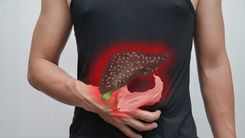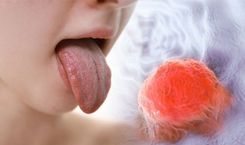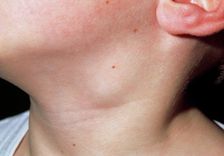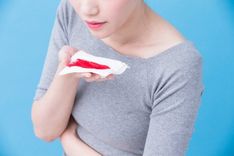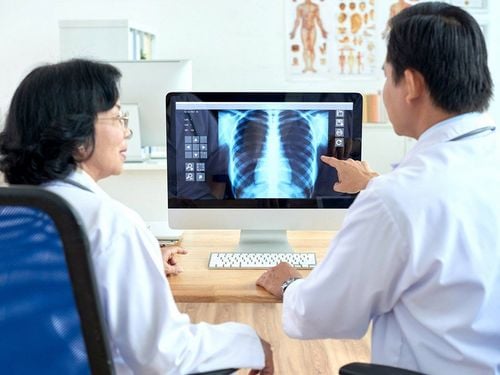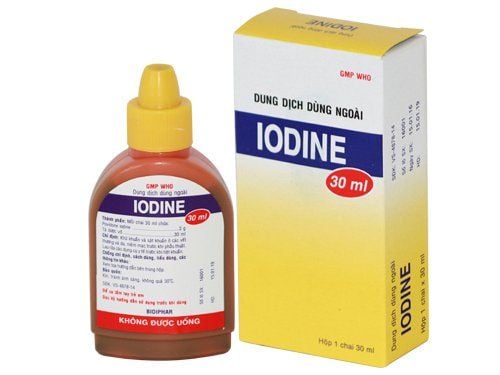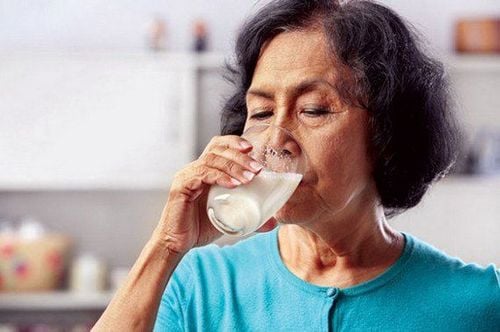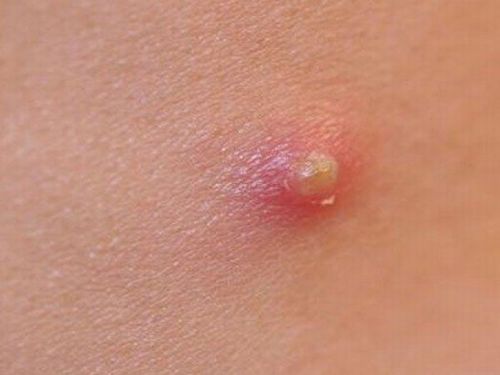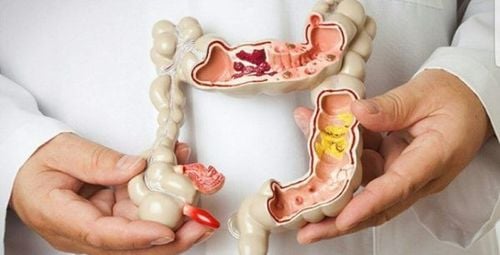Boils on the thigh are a common skin infection caused by the bacterium Staphylococcus aureus. Most boils will resolve within a few weeks without complications. However, if the boil on the thigh persists or recurs, you should see a doctor for timely treatment.
1. What is a Boil on the Thigh?
A boil is a common skin infection that causes painful lumps in the hair follicles and surrounding skin. The cause of boils is usually an infection in the hair follicles or oil glands. They are often caused by staphylococcal bacteria, which naturally reside on the skin and in the nose. Boils can develop anywhere on your body, but they are most commonly found in areas with friction or moist skin, such as the armpits, groin, and inner thighs.
The size and color of boils can vary depending on their severity or the affected skin area. However, most boils have similar characteristics. Boils on the thigh often start as a red lump, then fill with pus as white blood cells move to the area to fight the infection. Boils can also spread and develop into clusters. If this happens, the clusters of boils can form deeper abscesses called carbuncles, which can leave scars on the skin.
2. Symptoms of Boils on the Thigh
Boils on the thigh usually start as small red bumps that are itchy or painful. Within a few days, the boil will swell as it fills with pus and bacteria. It often develops a white head, bursts, and pus will drain out. After that, the boil may crust over. Although symptoms can vary in severity, most boils on the thigh will have the following signs:
- They are usually round, red, and swollen lumps.
- The boil is tender and sensitive.
- It exudes white pus due to dead tissue and white blood cells.
- Boils typically last about 10 days.
- Boils can appear singly or in clusters.
- Besides the thigh, boils can appear in other areas of the body.
- If your boil becomes larger or if the infection spreads, you may experience other symptoms such as feeling ill, fatigue, or fever.

3. Causes of Boils on the Thigh
Most boils on the thigh are caused by the bacterium Staphylococcus aureus. When a cut or scrape on the skin occurs, bacteria can invade the hair follicles and start an infection. About 10 to 20 percent of the population carries Staphylococcus aureus. These carriers can spread the bacteria through skin-to-skin contact. Bacteria can also spread through contact with contaminated objects, such as towels and bed linens. In most people, infections only occur when the skin's natural barrier is broken or damaged by factors such as trauma or friction. Anyone at any age can develop boils on the thigh. They often appear in areas of the body that are moist from sweat or where the skin experiences a lot of friction, especially the inner thighs. Some risk factors that make you more susceptible to boils on the thigh include:
- Having other skin conditions or infections such as eczema or psoriasis.
- Weakened immune system.
- Diabetes, as it can make it harder to fight infections.
- Living or working with others who have boils.
- Obesity can also make you more prone to boils.
- Having scars or cuts on the skin.
- Living or working in crowded areas.
- Older age (over 65 years).
- Poor hygiene.
- Animal bites.
- Unhealthy lifestyle such as poor nutrition or lack of exercise, smoking.
- Previous use of antibiotics, especially frequent or improper use in the past 6 months.
- Long-term use of corticosteroids.
- Intravenous drug use.
- Extreme or chronic stress.
- Wearing ill-fitting clothing during physical activity. Wearing dirty clothes, especially during exercise or activities involving friction on the inner thighs or sweating.
- Playing sports or performing exercises that cause inner thigh chafing, such as running, long-distance walking, or cycling.
- Shaving, waxing, and other hair removal methods that damage the skin surface.
4. When Should You See a Doctor for Boils on the Thigh?
Most boils will heal on their own within a week or longer without complications. However, if the boil on the thigh persists, becomes larger and more painful, or recurs, you should see a doctor. Small boils usually do not cause symptoms in other parts of the body. However, if the infection spreads, it can become serious. Any of the following symptoms require immediate medical attention as they may indicate a skin infection that has spread through the bloodstream and become life-threatening:
- The boil spreads and appears on the face or neck.
- Does not heal within about 10 days after forming.
- Does not completely heal within 1 to 3 weeks after bursting.
- Very painful and does not respond to anti-inflammatory or pain medications.
- Becomes more painful and swollen after bursting.
- Appears to be spreading to new tissues.
- Drains pus from multiple sites.
- The boil on the thigh is larger than 5 mm.
- Forms clusters or blisters.
- Surrounded by a painful, discolored patch of skin.
Other symptoms such as nausea, vomiting, loss of appetite, unexplained bruising, unexplained weight loss, fever, chills, or other flu-like symptoms.
Additionally, some individuals are at higher risk of complications from boils and may need medical care, including those with the following conditions:
- Immunocompromised.
- Diabetes.
- Those at risk of endocarditis, such as those with congenital heart disease.
- Anemia.
- Chemotherapy.

5. Treatment Methods for Boils on the Thigh
5.1 Home Treatment
There are some tips you can apply to treat boils at home:
- Do not squeeze or puncture the boil on the thigh to drain it as this can spread the bacteria inside the abscess to deeper layers of your skin.
- Keep the boil and surrounding skin clean.
- Wash your hands with soap or use disinfectant before and after touching the boil.
- Apply warm compresses frequently throughout the day, which will help the boil drain on its own. The American Academy of Dermatology (AAD) recommends applying warm compresses for 10 to 15 minutes, 3 to 4 times a day until the boil heals. You can apply warm compresses by soaking a clean cloth in hot water and ensuring the water is not too hot.
- If the boil is draining or in an area prone to friction, you should cover it with a clean bandage. This can help reduce irritation. It is difficult to avoid friction on the inner thighs, but you can wear loose-fitting underwear and clothing to avoid worsening the boil.
- The AAD also recommends using ibuprofen or acetaminophen to reduce pain from the boil.
- You can gently apply over-the-counter antiseptic and antibiotic creams and solutions.
- Regularly replace personal hygiene products that can cause cuts and scrapes, especially razors.
- For chronic or severe infections, clean all items that come into contact with your body daily.
5.2 Clinic Treatment
In many cases, you can treat boils at home. If home treatment is ineffective, the doctor may prescribe other treatment methods.
- For large and non-draining boils, the doctor may perform a minor surgery at the clinic. This is called incision and drainage, or commonly known as lancing the boil. The doctor will make a small incision in the boil to drain the pus and often send a sample of the pus to the lab for testing. Lab technicians can help identify the specific type of bacteria causing the infection, helping the doctor decide which antibiotic is best for treatment if necessary. Depending on the size, location, and other symptoms of the boil, draining the pus may be sufficient to cure the infection. The doctor may prescribe oral antibiotics. More severe infections may require hospitalization and intravenous antibiotics.
- For recurrent boils on the thigh or if you develop complications, the doctor may refer you to a dermatologist. They may also refer you to an infectious disease specialist.
- For larger infections and abscesses, the doctor may request an ultrasound of the affected area. This ensures that all the pus has been drained or in cases where the patient has a suspected subcutaneous boil that is not visible on the surface
6. How to Prevent Boils on the Thigh
Since bacteria are present everywhere in the environment and on many people's skin, the best way to prevent boils on the thigh is to:
- Wash your hands with soap or use antiseptics.
- Carefully clean cuts, scrapes, and other wounds.
- Cover wounds carefully and keep them dry and clean.
- Do not share personal hygiene items such as towels, razors, or bed linens.
- Wash towels, bed linens, and anything else that comes into contact with the infected area with hot water.
Boils are a common type of skin abscess. Most boils will heal within 10 days after forming, and after the boil drains, it tends to heal within 1 to 3 weeks. In some cases, boils can lead to complications, including scarring and systemic infections. See a doctor if the boil does not heal, is large, or has many other severe symptoms.
Please dial HOTLINE for more information or register for an appointment HERE. Download MyVinmec app to make appointments faster and to manage your bookings easily.
References: healthline.com, medicalnewstoday.com, webmd.com
